Buy now!
CD Images
(2008)
Works by Harry Crowl and Zoltan Paulinyi
Audio and bilingual CD-ROM (Portuguese/English) including all
scores (in PDF).
Click on each music name to view its score.
For program notes, click on the track number.
Harry Crowl |
[ 1 ] |
Canto
(4:43) |
ISRC
# BR-ZOL-08-00004 |
| |
|
Violin: Zoltan Paulinyi |
|
Zoltan Paulinyi |
[ 2 ] |
Acalanto n.
1 (2:23) |
BR-ZOL-08-00007 |
| |
|
Violin: Zoltan Paulinyi |
|
Harry Crowl |
[ 3 ] |
Solilóquio
III (13:43) |
BR-ZOL-08-00005 |
| |
|
Violin: Zoltan Paulinyi |
|
Zoltan Paulinyi |
[ 4 ] |
Toada (8:34) |
BR-ZOL-08-00009 |
| |
|
viola pomposa: Zoltan Paulinyi |
|
Harry Crowl |
[5-6] |
Cambiata |
|
| |
|
• Proposição (4:07) |
BR-ZOL-08-00002 |
| |
|
• Corolário (2:06) |
BR-ZOL-08-00003 |
| |
|
viola pomposa: Zoltan Paulinyi |
|
Zoltan Paulinyi |
[ 7 ] |
Oblação
(2:13) |
BR-ZOL-08-00010 |
| |
|
viola pomposa: Zoltan Paulinyi |
|
Harry Crowl |
[ 8 ] |
As impuras
imagens do dia se desvanecem (13:25) |
BR-ZOL-08-00001
|
| |
|
viola pomposa: Zoltan Paulinyi |
|
Zoltan Paulinyi |
[ 9 ] |
Acalanto n.
2 (3:43) |
BR-ZOL-08-00008 |
| |
|
Clarinet: Felix Alonso / Violin: Zoltan Paulinyi. |
|
| |
[10] |
Pluma
(1:28) |
BR-ZOL-08-00011 |
| |
|
Bassoon: Iracema Simon / Violin: Zoltan Paulinyi |
|
| |
[11] |
Biduo
d'ouro (2:51) |
BR-ZOL-08-00006 |
| |
|
• Moderato e allegro |
|
| |
|
Bassoon: Iracema Simon / Violin: Zoltan Paulinyi |
|
| |
[12] |
Brincadeira
de Roda (3:10) |
BR-ZOL-08-00012 |
| |
|
Clarinet: Félix Alonso / Bassoon: Flávio Figueiredo |
|
| |
[13] |
Jesus nailed
to the cross (4:29) |
BR-ZOL-08-00013 |
| |
|
• Via Sacra scene XI
Clarinet: Félix Alonso / Violins:
Karla Oliveto e Zoltan Paulinyi |
|
| (Total length: 67:01) |
|
|
|
PRESENTATION
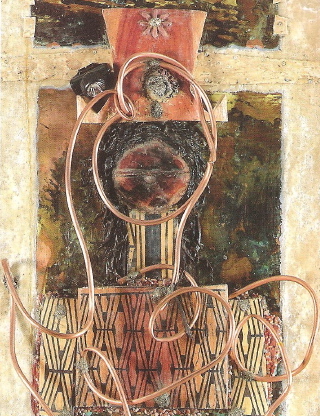 "As
head of the Cultural Section of the Embassy of Brazil in Paris I had the
pleasure and honour of presenting works by Zoltan Paulinyi and Harry Crowl
to a French audience at Villa-Lobos Hall in 2008. 'Images',
the most recent product of Paulinyi and Crowl's partnership, consists of
pieces played by Paulinyi on violin and viola pomposa. The result is full
of harmony, and I am sure it will rank among the finest pieces of contemporary
Brazilian music."
"As
head of the Cultural Section of the Embassy of Brazil in Paris I had the
pleasure and honour of presenting works by Zoltan Paulinyi and Harry Crowl
to a French audience at Villa-Lobos Hall in 2008. 'Images',
the most recent product of Paulinyi and Crowl's partnership, consists of
pieces played by Paulinyi on violin and viola pomposa. The result is full
of harmony, and I am sure it will rank among the finest pieces of contemporary
Brazilian music."
- Ruy Amaral, Minister Counsellor.
 "A
very relevant artistic gathering: Harry Crowl and Zoltan Paulinyi.
"A
very relevant artistic gathering: Harry Crowl and Zoltan Paulinyi.
Born
in Belo Horizonte, Harry Crowl was first dedicated to learning both violin
and viola. He was soon to become definitively interested in a very unique
kind of musical composition. In that field, he nurtured and developed through
time a musical language based on the most advanced aesthetical propositions
of contemporary musical art. Taking the fine example of the works currently
performed on this CD (The unpurged images of day recede, Cambiata, Chant,
Solilóquio III) one notices that the composer’s creative force
lies on the challenge of using with great sense of balance the many possibilities
of the instruments sound resources. His very elaborated and original writing
values both the violin and viola’s different technical resources.
Such result is obtained without the use of a shallow virtuosity and the
musical discourse is dense and poetic. In a few words: His writing for strings
is that of a master. His achievements are highly noticeable. Harry Crowl
has had his music performed through both live performances and recordings
all over Brazil and abroad in countries such as France, Germany, Denmark,
Austria, Slovakia, Slovenia, Romania, Bulgaria, Canada, USA, Mexico, Chile
and many others. It is a more than deserved recognition.
Zoltan
Paulinyi, also born in Belo Horizonte, has had his very successful career
as violinist testified through both his public appearances and the recordings
he has already produced. After having a broad experience playing the traditional
repertoire, he found himself in contact with Brazilian 20th century repertoire
by composers such as Camargo Guarnieri, Cláudio Santoro, Villa-Lobos
and more specifically the violin preludes of our spectacular Flausino Valle
(By the fire, Batuque, Country Wedding, etc…)
He further mastered a very attractive new music repertoire. With his talent
and knowledge he brought to Harry Crowl’s scores indisputably one
of the finest technique and interpretation. As a composer, Zoltan Paulinyi
presents on the Cd some of his most inspired pieces. Works such as Joke,
Oblação, Lullabies 1 and 2, Feather, Golden Bi-duo, Via-Crucis,
Rounds Game show his many talents."
- Ricardo Giannetti (English version by H.C.)
COMPOSERS
Harry Crowl: composer
and musicologist
 HarryCrowl@uol.com.br
HarryCrowl@uol.com.br
Born in Belo Horizonte, Brazil, on October 6th, 1958, Harry
Crowl took violin lessons in his native town before going to the US to continue
his studies in viola and in composition under Charles Jones, at the Juilliard
School of Music, New York. Graduate in English and Portuguese. Further composition
studies under Peter Sculthorpe in Dartington, England. Post-Graduate studies
in Semiotics at the Catholic University of São Paulo.
Living in Curitiba, southern state of Paraná, he is
currently the Artistic Director of the Federal University of Paraná’s
Philharmonic Orchestra and Professor at the School of Music and Fine Arts
of Paraná (EMBAP). Also produces and presents radio broadcasts on both
classical and contemporary music for the State of Paraná Educational
Radio.
Harry Crowl’s production comprises all genres of instrumental
and vocal music ranging from solo to orchestral, from songs to opera covering
a range of more than 100 pieces. His music has been performed and broadcast
all over Brazil and also in Chile, Mexico, Canada, USA, France, Denmark, Sweden,
UK, Germany, Austria, Romania, Bulgaria, as well as in some other South-American
and European countries, Asia and Africa.
As a musicologist, he discovered, compiled, edited and published
some important late 18th century music by Brazilian composers of great importance
to early Latin-American music.
Among the many ensembles that have already commissioned and
performed Harry Crowl’s music are "Grupo Novo Horizonte de São
Paulo"(Brazil), "Ensemble Nord"(Denmark), "George Crumb
Trio" (Austria), "Moyzes Quartet" (Slovakia), Romanian Radio
Chamber Orchestra, “Trio Fibonacci” (Canada), "Camerata Antiqua
de Curitiba"(Brazil), Paraná Symphony Orchestra (Brazil) and Orchestre
de Flutes Français.
Paulinyi@yahoo.com
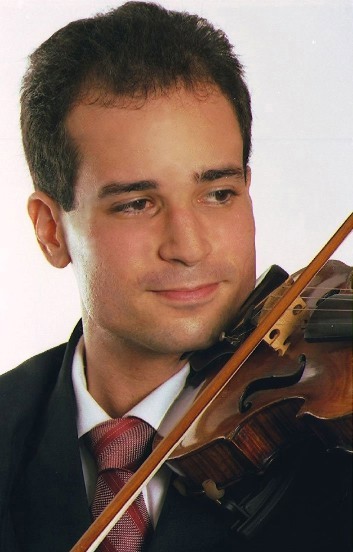 Born
in 1977, started his musical studies when he was only two and a half. His
first public appearance as a Ricardo Giannetti's pupil was at Ouro Preto Opera
House, aged 8. In Brazilian and English festivals, he had classes with Ruggiero
Ricci, Leopold La Fosse, Micaela Comberti, among many others. Studied composition
with Oiliam Lanna, having masterclasses with Oscar Edelstein and Harry Crowl
as well.
Born
in 1977, started his musical studies when he was only two and a half. His
first public appearance as a Ricardo Giannetti's pupil was at Ouro Preto Opera
House, aged 8. In Brazilian and English festivals, he had classes with Ruggiero
Ricci, Leopold La Fosse, Micaela Comberti, among many others. Studied composition
with Oiliam Lanna, having masterclasses with Oscar Edelstein and Harry Crowl
as well.
Paulinyi was spalla in festival orchestras of Juiz de Fora and
Brasília, and presents solo works in Brazilian, English and Italian
orchestras since 1987. He was awarded by the Press Critics in Minas Gerais
States with the “Outstanding award 1998”. He is also winner of
the Goiânia National Competition (2002).
Among dozens of recordings, Duo
MAGYAR (2002) is the first to include his compositions. Other notable
releases are by Quinteto AMIZADE
(2005) and Trio SONARE (2008).
His works were played at Oradea Festival (Romênia, 2002) as a hommage
to his 25 years of age; at FUNARTE Bienal (Rio de Janeiro, 2005); at Ensemble
SPES european turné, which premiered some works in Spain, France,
Hungary and England (2008).
Paulinyi undergraduated in Physics at the Federal University
of Minas Gerais State (UFMG) in 1999 and moved to Brasília in the following
year after winning a post in the National Theatre first violins section. Married
to Iracema in 2006, with whom developes musical pedagogical works focused
on babies, children and adults with young spirit.
Violin: venezian school of Sanctus Seraphin,
around 1750 (restored by C.M. Del Picchia).
Bow: Carlos
Martins Del Picchia, "Shield" 2002; "Swan head" 1996
(for the Acalantos).
viola pomposa: 5 stringed Guadagnini's model
1765 by Carlos Martins Del
Picchia, 2006.
Bow: Pfretzschner.
COMPONENTS
Félix ALONSO (clarinet)
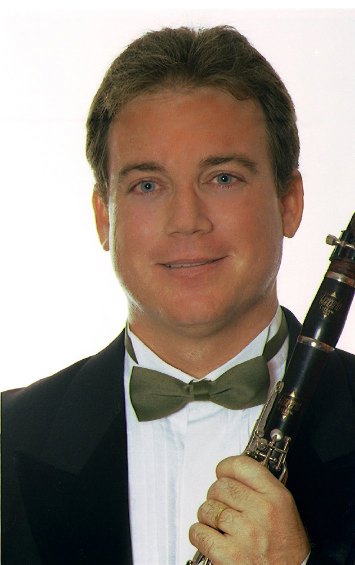 FelixAlonsoMorales@yahoo.com.br
FelixAlonsoMorales@yahoo.com.br
Born in Cuba, he started his clarinet studies with prof. Roberto
Medina, receiving degrees in performing, teaching and chamber music in the Havana
National School of Music (1994). Aged 13, he performed Weber’s Concertino
with Matanzas Symphonic Orchestra, where a few years later he would be the first
clarinetist. He won two awards in the Amadeo Roldán Clarinet Competition,
in Cuba (1989 and 1991). He has travelled twice to Spain (1994 and 1995), touring
with the orchestra and recording two discs. He is a player of Quinteto
Amizade (with a CD released in 2005), and of Quinteto Brasília, (a
CD "Brincadeira a Cinco" to be released). He is currently a teacher
at Brasília Music School and CEUB School.
Clarinete: Buffet Crampon.
Flávio Lopes de FIGUEIREDO Júnior (bassoon)
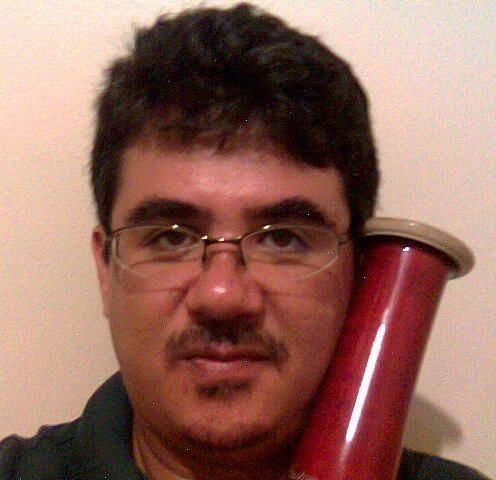 psimusflavio@yahoo.com.br
psimusflavio@yahoo.com.br
Born in São Paulo. Started his musical studies in 1980
at Lira Américo Pascoali (Águas de Lindóia). He had studied
the bassoon with many teachers (Noes Devos, Clóvis Franco, Alejandro
Aizemberg e Afonso Venturieri) and undergraduated in Music/Bassoon at University
of Brasília, under Hary Schweizer. He played in many orchestras, as the
Young Dr. Carlos de Campos Conservatory Youth Orchestra of Tatuí, Sorocaba
Municipal Symphonic Orchestra, Goiás Phylarmonic Orchestra, and contrabassoonist
at São Paulo State Symphonic Orchestra. He was bassoon teacher at School
of Music and Performing Arts at Federal University of Goiás, and bassoon
teacher and conductor of the Symphonic Band of Brasília Music School.
Since 1991, he is a component of Claudio Santoro National Theatre Symphonic
Orchestra, where he premiered in 2006 the Fernando Moraes' Concertino for Contrabassoon
and strings. At the same year, he played in the Hary Schweizer's CD recording
"Com Licença!". He also is bassoonist at Brasília Wind
Quintet Ensemble, and Clarinet and Bassoon Duo.
Karla OLIVETO (violino)
 KarlaOliveto@yahoo.com.br
KarlaOliveto@yahoo.com.br
She has a master degree in music by UnB (University of Brasília,
2007), the same institution where she undergraduated in Violin (1997) as Ludmila
Vinecka’s pupil, in Music Teaching (2000) and in Chamber Music graduation
(2002).
She started her studies in 1983 at Brasília Music School where she
obtained the title of “Expert on Violin” in the class of prof.
Marena Salles. She attended to many masterclasses in Brasil and Portugal.
She performed as solist under maestro Emilio de Cezar and Elena Herrera, and
was invited to play at Matanzas Symphonic Orchestra in 1997. She recorded
a Brazilian music CD called “Rabeca
Moderna” (2002) and another CD “Quinteto
AMIZADE” (2005). She currently teaches violin playing in Brasília
Music School.
Violin: presumed Justin Derazey, around
1880.
Bow: Sáránszky Pál, from Paulinyi’s
collection.
Iracema SIMON (bassoon)
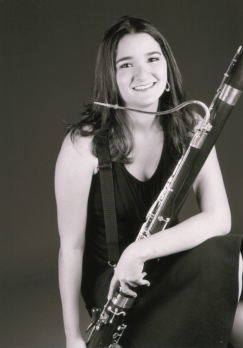 IrinhaSimon@gmail.com
IrinhaSimon@gmail.com
She forms the Duo SPES
along with Paulinyi since 2006, working mainly on pedagogical projects and focusing
on brazilian repertoire. She plays weekly at Mother of Divine Mercy Parish in
Brasília.
Player since 1993, Simon started teaching music to children in
2003 as Choir Rouxinóis assistant. She was head of the recorders section
of the "Music for children" project at the Brasília University
(UnB) until 2007. Since 2008, she teaches music at INEI.
Bassoon: made by Hary Schweizer in 2002, number
34.
PROGRAM NOTES
Click on each title to view its full score.
Harry Crowl
for violin
Canto was composed in 1981 during a music winter festival
in the historical town of Diamantina.. It hovers around an idiomatic discourse
heavily marked by an atonal language, which develops through an unmistakably
continuous variation technique. The piece is dedicated to Edson Queiroz and
it was premiered in 1990 by Ricardo Giannetti.
Zoltan Paulinyi
for violin
Written for Carlos Del Picchia's daughter. He is the violin
maker who gave the life blow to the instruments played on this present recording.
Harry Crowl
for violin
This is a composition based on a pre-established structure
in contrast with the previous ones. Solilóquio III displays the form
of a response in the church music sense. These responses were very common
works especially within the Catholic tradition countries during the 18th and
19th centuries. The fore mentioned formal structure is A-B-C-B-A where sections
B are very similar due to the use of composite tempo formulae such as 6/8,
5/8, 7/8, etc.The use of such formulae gives the music in these sections an
almost classic lightness. This is an extremely technically complex piece,
which requires the use of all idiomatic possibilities of the violin. Solilóquio
III is preceded by Solilóquio I (1995) for sax tenor and, Solilóquio
II (2000) for cello. It is dedicated to Atli Ellendersen who premiered it
during the Summartónar Festival, in the Faroe Islands, in 2006.
Zoltan Paulinyi
variations and theme for viola pomposa
A song sprouts from a soul working at the countryside. It
is not alone, but joyfully surrounded by the nature agitation. Composition
inspired on Marlene Godoy's pictures, aiming a contemporary art absolutely
rooted on Brazilian culture.
Harry Crowl
for viola
It was premiered on the same occasion “Canto”
was. It was then adapted for solo violin to be performed by Ricardo Giannetti.
In “Cambiata”, the formal unity is achieved through the recurrent
use of a Gregorian chant-like melody throughout the piece. The fragmented
grace notes that appear in some moments the regularity proposed by the original
Gregorian line. A constant alternation of discourse between old and new figures
gives this work its ambivalent character.
Zoltan Paulinyi
for viola pomposa
A musical prayer, which the melody penetrates the soul's
most intimate area and raise all personal offerings to God's throne. Piece
inspired during a meditation moment before the beginning of a mass in July
2007.
Harry Crowl
“The unpurged images of day recede”,
for viola pomposa
“The unpurged images of day recede” is the opening
verse of William B. Yeats’symbolist poem “Byzantium”. This
piece is a musical journey into a night inhabited by memories, many of them
of fantastic nature. Virtuosic elements give support to this sound trajectory,
which follows an endless line full of surprises without any return to its
starting point. This work was composed for the Canadian violist Laura Wilcox
and it was first performed in 2008, in Brasilia, by Zoltan Paulinyi.
Zoltan Paulinyi
Berceuse, for violin and clarinet
Composition written to Félix Alonso and Karla Oliveto's
daughter. It's theme associates a note to each letter of her name.
Zoltan Paulinyi
Plume, for violin and bassoon
A free counterpoint whose theme associates anote to each
syllabe of "Maria & Francisco Capelão".
Zoltan Paulinyi
version for violin and bassoon
This piece is about the two paths one has to choose in life
between the Fantasy and the real world: the right or the evil one. This piece
was originally written as a violin duo for my pupils, later adapted to many
other instrumental combinations.
Zoltan Paulinyi
for clarinet and bassoon
“Whoever humbles himself like this child, he is
the greatest in the kingdom of heaven.”- Mt 18,4.
Theme with variations where the music plays with itself.
Zoltan Paulinyi
VIA–SACRA
for two violins and clarinet
A view to the Cross timber and its nails.
“And when they were come to the place which is called Calvary, they
crucified him there; and the robbers, one on the right hand, and the other
on the left. And Jesus said: Father, forgive them, for they know not what
they do.”
Lk 23, 33-34a.
SPONSORS
We are very thankful to our sponsors,
without whom it would be impossible to dream and spread joy through music!

ORMIMAQ
Tel.:(31)3275-4477
FAX: (31) 3275-2454
R.Goitacases, 1440 - Barro Preto
Belo Horizonte - MG - CEP 30.190-052
ormimaq@hotmail.com
|
Duo
Magyar
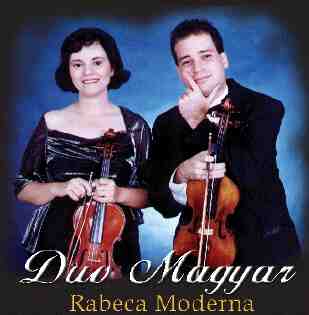
|
ABOUT THIS RECORDING

Recording: Ricardo
Nakamura, Boy's studio, Brasília, June 2008.
Booklet: Cecília Esteves - Master Disc.
Translation: Harry Crowl and Zoltan Paulini.
Homepage: PROjECT z
Pictures: Marlene Godoy (Imagens - frontpage / São
José Operário - p. 2 / Flores - back);
Iracema Simon (Máscaras de carnaval);
Zoltan Paulinyi (Hyper-realism I)
Photographer: Rui Fachini and Sônia Guerra for Marelene
Godoy's works, Iracema Simon and Zoltan Paulinyi for their own works.
Sponsors: Ormimaq & Duo Magyar
Thanks to Maria Vitória and Francisco Capelão
and their family, and all who helped us in this project! Special thanks to
my family and wife, and to all friends who recorded with me! This recording
finnished at June 29, 2008, St. Peter and St. Paul's Day!
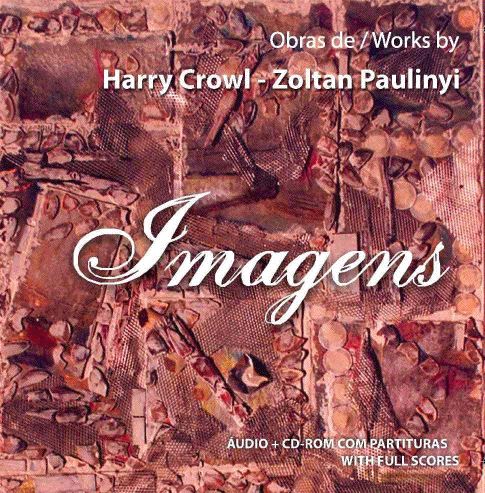

 "A
very relevant artistic gathering: Harry Crowl and Zoltan Paulinyi.
"A
very relevant artistic gathering: Harry Crowl and Zoltan Paulinyi.






